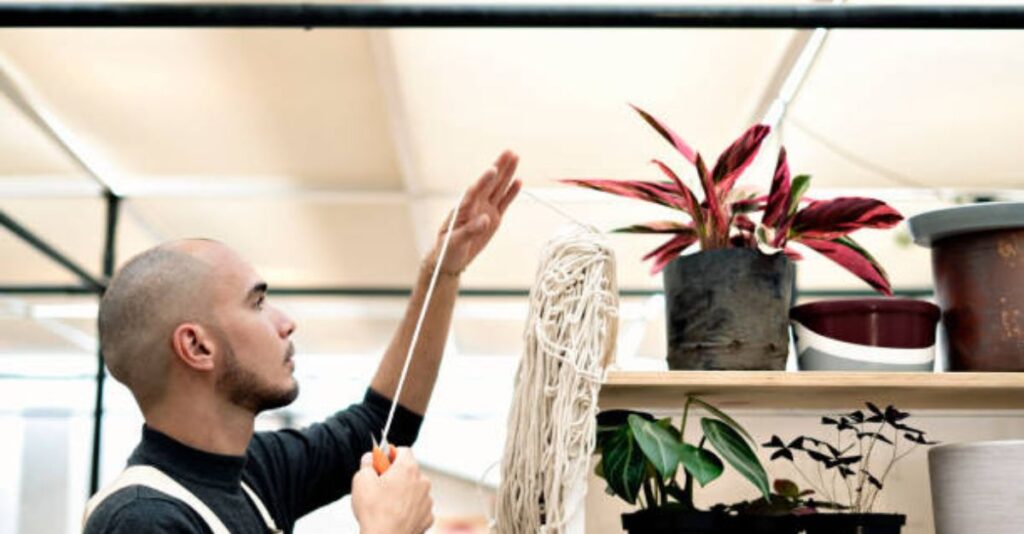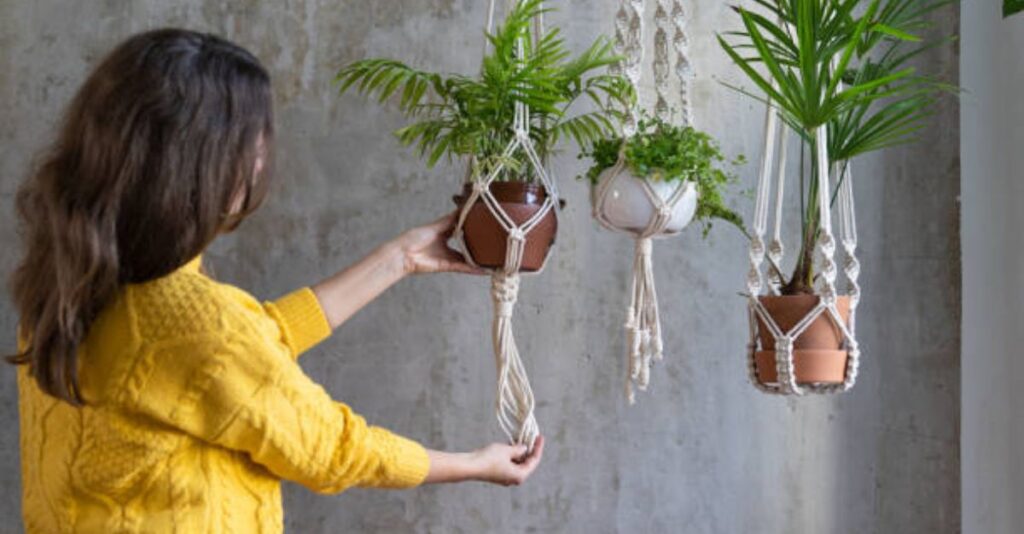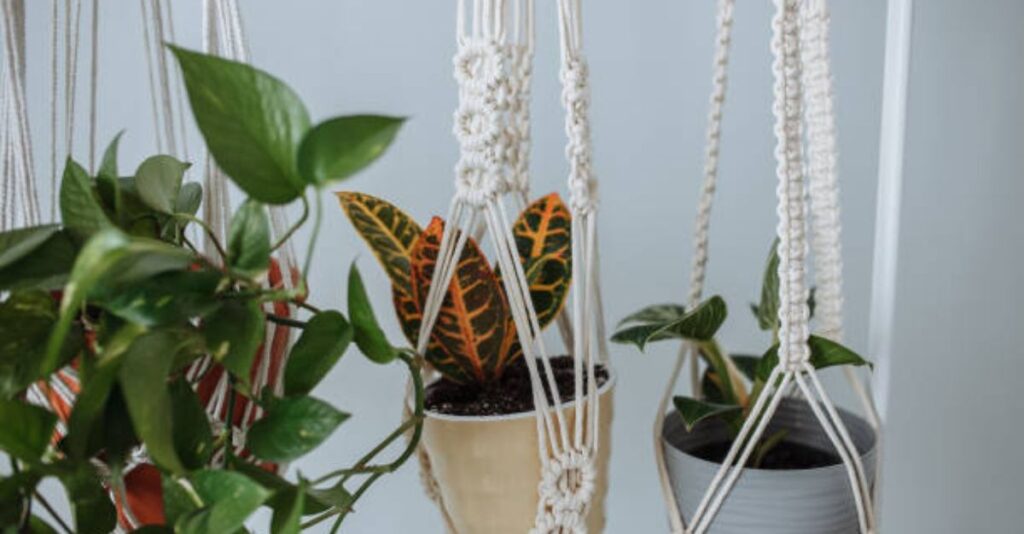Introduction
4 Common Macrame Plant Hanger Mistakes and How to Fix Them
Macrame plant hangers are a beautiful and functional way to display plants, adding a touch of bohemian charm to any space. However, many beginners make common mistakes that can affect the durability, aesthetics, and functionality of their plant hangers. Whether you’re new to macrame or looking to improve your technique, identifying these mistakes and learning how to fix them will help you create stunning and long-lasting designs.
4 Common Macrame Plant Hanger Mistakes and Fixes

1. Uneven Knotting
Mistake: One of the most frequent issues is knots that are unevenly spaced or inconsistently tightened, leading to a lopsided plant hanger.
How to Fix It:
- Ensure all strands are of equal length before starting.
- Maintain consistent tension while tying knots.
- Use a measuring tape or ruler to check spacing between knots.
- Practice basic knots, such as the square knot and spiral knot, to develop uniformity.
2. Using the Wrong Type of Cord
Mistake: Choosing an inappropriate cord type can result in a weak or frayed macrame plant hanger.
How to Fix It:
- Use 100% cotton cord, which is durable, flexible, and easy to work with.
- Avoid synthetic cords that may be too slippery or difficult to manipulate.
- Choose a thickness between 3mm and 6mm for optimal strength and aesthetics.
3. Incorrect Plant Sizing
Mistake: A common issue is making a hanger that is too small or too large for the intended plant pot, leading to instability.
How to Fix It:
- Measure the diameter and height of your plant pot before designing the hanger.
- Adjust the knot placement and spacing to fit the pot snugly.
- Test the hanger with the pot before finalizing the knots to ensure a secure fit.
4. Weak Hanging Support
Mistake: Improper anchoring of the macrame hanger can cause it to fall or damage the ceiling/hook.
How to Fix It:
- Use a sturdy hook rated for the weight of the plant.
- Install the hook securely into a wall stud or ceiling joist rather than just drywall.
- Consider using S-hooks or metal rings for additional support.
Trends in Macrame Plant Hanger Designs
Macramé plant hangers have evolved over the years, blending traditional knotting techniques with modern aesthetics. Here are some of the latest trends in macramé plant hanger designs:

1. Minimalist Macramé Hangers
- Simple, clean designs with fewer knots and neutral colors.
- Perfect for modern and Scandinavian-style homes.
- Uses cotton cords in white, beige, or gray.
2. Boho-Chic Layered Hangers
- Features intricate knots, fringes, and tassels.
- Often paired with wooden beads or driftwood for a natural look.
- Complements bohemian and rustic décor.
3. Multi-Tiered Plant Hangers
- Designed to hold two or more plants in a cascading arrangement.
- Saves space while creating a stunning vertical garden.
- Ideal for apartments and small spaces.
4. Colorful & Dip-Dyed Hangers
- Moving away from traditional neutrals, designers are incorporating colorful threads.
- Ombre and dip-dyed effects add a playful and artistic touch.
- Great for brightening up indoor and outdoor spaces.
5. Geometric & Symmetrical Patterns
- Incorporates precise, angular knots and symmetrical designs.
- Inspired by Art Deco and modern geometric trends.
- Works well in contemporary and industrial interiors.
6. Macramé with Wooden or Metal Rings
- Instead of the usual looped top, some designs feature a wooden or metal ring.
- Adds a refined and polished look.
- Provides more stability and structure.
7. Macramé Shelf Hangers
- A fusion of macramé and shelving, allowing small potted plants or decorative items.
- Uses wooden planks integrated into the macramé knots.
- Perfect for displaying succulents or decorative elements.
8. Outdoor-Friendly Macramé
- Made with weather-resistant materials like nylon or polyester instead of cotton.
- UV-resistant cords to prevent fading and wear.
- Suitable for patios, balconies, and garden spaces.
9. Eco-Friendly & Sustainable Designs
- Use of recycled or organic cotton cords.
- Handmade by artisans supporting fair trade and sustainable practices.
- Focus on biodegradable and low-impact materials.
10. Personalized & Custom Macramé Hangers
- Custom knot patterns, initials, or symbols woven into the design.
- DIY kits and workshops allowing personalization.
- Unique gifts and home decor pieces.
Expert Suggestions for a Professional Finish
For a polished and professional finish in macramé plant hangers, experts recommend the following techniques and details:

1. Use High-Quality Cord
- Opt for 100% cotton, recycled cotton, or nylon for durability.
- Choose the right thickness (3mm-5mm for delicate designs, 6mm+ for sturdy hangers).
2. Keep Knot Tension Consistent
- Uneven knots can make the hanger look sloppy.
- Maintain steady hand pressure to ensure uniformity.
3. Measure Cord Length Accurately
- Use a formula (typically 4x the finished length) to avoid running short.
- Always cut extra if unsure—it’s easier to trim than extend.
4. Secure Loose Ends Neatly
- Wrap knots (gathering knots) help keep ends from fraying.
- Burn or glue synthetic cords to prevent unraveling.
5. Incorporate Beads & Rings with Precision
- Choose wooden, metal, or ceramic beads that complement the design.
Ensure rings (wood or metal) are strong enough for the plant’s weight.
6. Maintain Symmetry & Balance
- Align knots evenly and use a flat surface or tape measure for accuracy.
- Check the balance before finishing by hanging and adjusting.
7. Finish with a Clean Trim
- Use sharp fabric scissors for a crisp, professional look.
- Try a straight, angled, or fringe cut depending on the aesthetic.
8. Block & Steam for a Polished Look
- Use steam to relax fibers and remove creases.
- Block the design by laying it flat and pinning it into shape before drying.
9. Use a Secure Hanging Method
- Sturdy ceiling hooks or wall mounts ensure safety.
- Test weight capacity before adding a plant.
10. Experiment with Unique Designs
- Mix different knot techniques (e.g., square knots, spiral knots).
- Play with color variations or dip-dyeing for a modern touch.
Conclusion
By avoiding these common macrame plant hanger mistakes, you can ensure your creations are both stylish and functional. Paying attention to knot consistency, cord choice, plant sizing, and support will result in beautiful and sturdy plant hangers. With patience and practice, your macrame skills will improve, allowing you to craft professional-quality pieces that enhance your home decor.
References
- DIY Macrame Guides – Macrame for Beginners
- Plant Hanging Safety – Home Decor Safety Tips
FAQs
1. What is the best cord for macrame plant hangers?
100% cotton cord between 3mm-6mm thickness is ideal for strength and flexibility.
2. How much cord do I need for a macrame plant hanger?
The amount varies based on design, but typically 6-8 times the intended finished length.
3. Can I use synthetic rope for macrame plant hangers?
While possible, natural cotton cords are recommended for better grip and aesthetics.
4. How do I prevent my macrame hanger from stretching over time?
Use a sturdy cord, secure knots tightly, and avoid excessive weight on the hanger.

